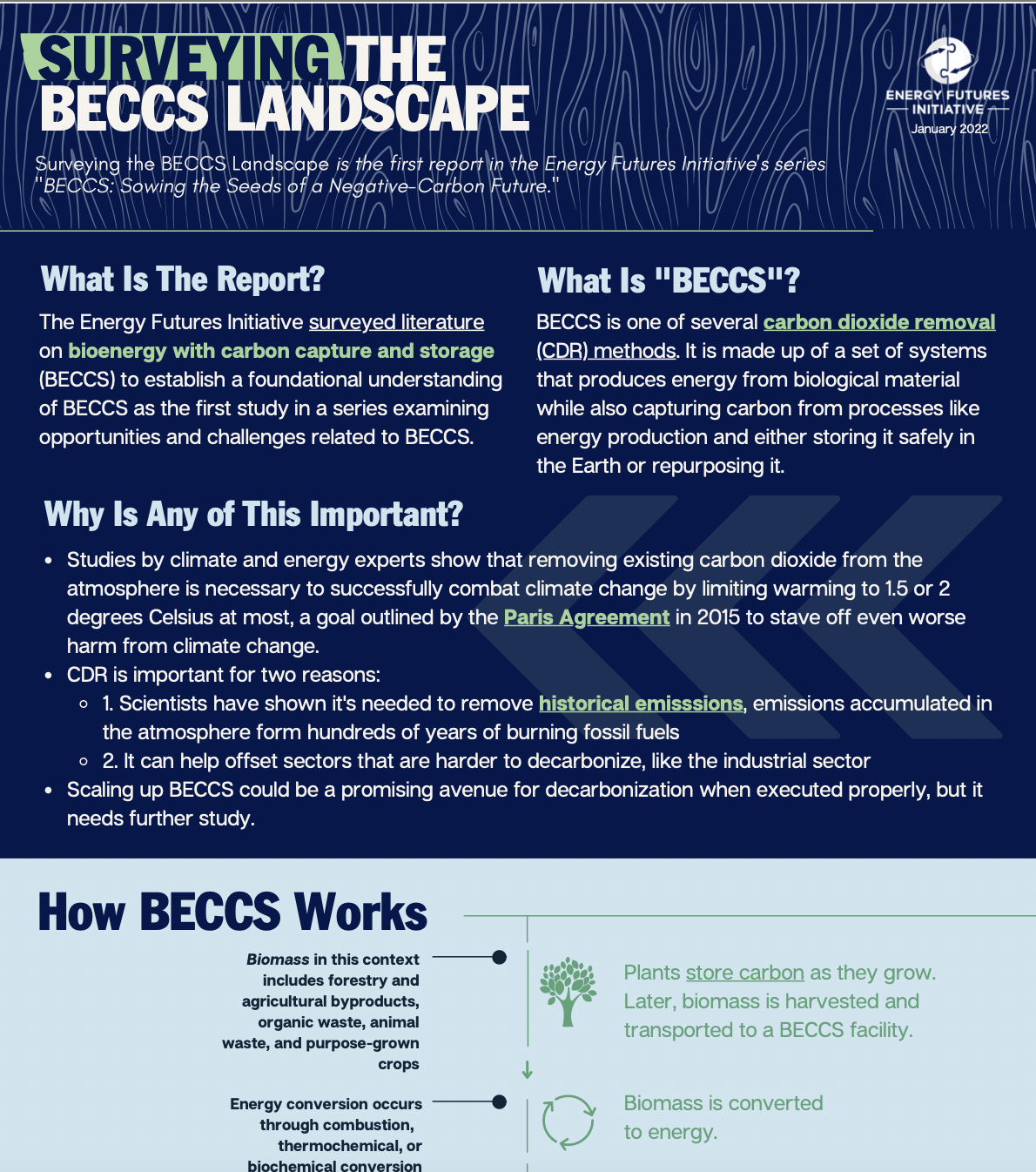Bioenergy with carbon capture and storage (BECCS) refers to a set of systems that can work together to harness and contain carbon from biological matter like trees, food waste, and manure. Because carbon is a building block of life, living biomass absorbs carbon from the atmosphere, yet when that material decays, carbon is released, adding to the warming of the planet. Many scientists argue that BECCS methods can help decarbonize carbon intensive activities in the agriculture and timber industry sectors by harvesting the biomass from waste wood in the timber industry, manure from livestock, or food waste in a landfill.
Studies estimate that BECCS could remove up to 2.2 gigatons of carbon annually—equal to emissions generated annually by the transport and residential buildings sectors —and could reduce overall emissions by up to 36% in the United States. If that scenario plays out, BECCS could bring the United States one-third of the way to its net-zero by 2050 goal, according to the EFI report Surveying the BECCS Landscape. This BECCS fact sheet summarizes how BECCS works and the key findings that report.
(Share this post with others.)





